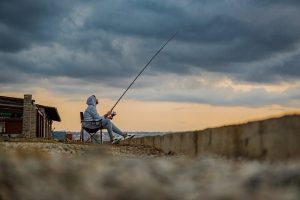1. Hull Design and Materials: The hull design of modern fishing kayaks is optimized for speed and efficiency, using hydrodynamic principles to minimize drag. Advanced materials like carbon fiber and Kevlar are increasingly used for their lightweight properties and superior strength, enhancing the kayak's performance without compromising on durability or stability.
2. Propulsion Systems: Anglers must choose between pedal-driven or paddle kayaks based on their preferences for comfort, hands-free operation, and ease of handling gear. Pedal-driven kayaks are beneficial for long outings as they free up the hands for casting and managing equipment, reducing physical strain.
3. Paddling Technique: Mastering efficient paddling strokes is essential for covering more water with less effort. A powerful forward stroke, proper posture, and a consistent cadence are key to maintaining momentum and achieving longer periods of undetected presence in the water, which is crucial for not spooking fish.
4. Seat Design and Adjustment: An optimally adjusted kayak seat at the waterline minimizes resistance, improving dynamic balance and control, which is critical for maintaining an efficient paddling motion.
5. Stability vs. Speed: The design of the fishing kayak must balance secondary and primary stability with speed. High-density polyethylene (HDPE) remains a common material due to its durability and buoyancy, but it is often combined with advanced composites to reduce weight and improve performance.
6. Angler's Efficiency: By refining paddling techniques and selecting the right equipment, fishing kayak enthusiasts can enhance their efficiency on the water, covering more ground and spending more time fishing productively.
7. Material Science Advancements: Recent advancements in material science have led to significant improvements in the performance and design of fishing kayaks, turning them into sophisticated tools that offer a more efficient and enjoyable angling experience.
In summary, the efficiency of a fishing kayak is influenced by its hull design and materials, the choice of propulsion system, the paddler's technique, seat adjustment, stability, and the integration of advanced materials. These factors work together to provide anglers with a responsive, fast, and comfortable platform for their expeditions, ultimately leading to a more successful and enjoyable fishing experience.
Embark on a swift voyage into the realm of high-speed fishing with our comprehensive guide tailored for enthusiasts seeking to enhance their kayak’s performance. This article delves into the critical aspects of optimizing your fishing kayak, from its anatomy and ergonomics to advanced materials and perfecting your stroke. Discover how streamlined hull designs and precision propulsion systems can transform your paddling experience, along with essential gear for speed demons. Whether you’re a seasoned angler or a newcomer to the sport, these insights will elevate your kayak’s efficiency, allowing you to traverse the water with unparalleled speed and finesse.
Optimizing Your Fishing Kayak for Maximized Speed and Efficiency
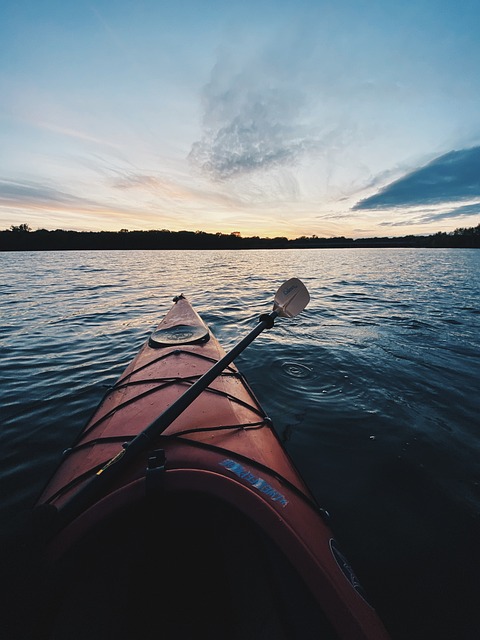
When venturing out in a fishing kayak, achieving maximized speed and efficiency is paramount for anglers looking to cover water effectively and capitalize on fleeting opportunities. To optimize your fishing kayak for these objectives, it’s essential to consider the design and materials of the hull. A sleek, V-shaped hull with a sharp front can significantly reduce drag and cut through the water with less resistance, thus enhancing your kayak’s speed. Additionally, selecting a kayak with a lighter weight composition, such as polyethylene or carbon fiber, can greatly improve maneuverability and acceleration on the water.
Furthermore, outfitting your fishing kayak with streamlined accessories and thoughtful additions plays a crucial role in attaining peak performance. Attaching a rudder or skeg can aid in directional control, reducing the energy required to keep your course straight and minimizing drag from wind and currents. Integrating a high-quality pedal drive system or a robust paddle can also provide more powerful propulsion, allowing you to cover distances efficiently without tiring. Anglers should also consider the placement of fishing gear and electronics to maintain a low profile and reduce obstruction in the water flow. By carefully selecting your kayak design and thoughtfully choosing equipment that complements it, you can create a setup that maximizes speed and efficiency for an unparalleled fishing experience.
The Anatomy of a High-Speed Fishing Kayak: Design and Features
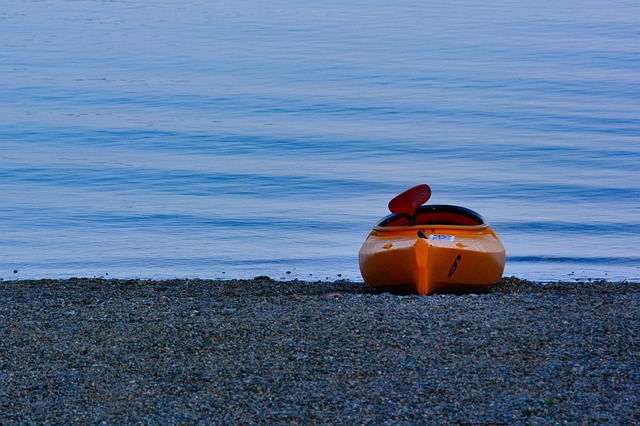
A high-speed fishing kayak is meticulously engineered to blend performance with functionality, catering to anglers who demand swift and efficient navigation across various water bodies. The design of such a kayak prioritizes aerodynamics and lightweight construction to minimize drag and resistance, enabling paddlers to glide through the water with minimal effort. The hull is typically V-shaped or features a keel for better tracking and speed, while also providing the necessary stability for casting and retrieving lines.
In addition to its streamlined hull, these kayaks are equipped with specialized features that enhance the fishing experience. They often come with ample storage compartments, strategically placed to maintain the kayak’s balance and speed. Integrated rod holders allow for hands-free fishing, and the inclusion of standup platforms or elevated seating positions offers anglers a better vantage point for spotting fish and navigating around obstacles. Advanced fishing kayaks may also incorporate state-of-the-art technology such as sonar systems, GPS tracking, and high-quality material finishes that withstand the elements, ensuring that avid fishermen can fully focus on the pursuit of their catch in a kayak designed for both speed and utility.
Essential Considerations for Paddler Ergonomics in High-Performance Kayaks

In high-performance kayaking, particularly within the context of fishing kayaks, paddler ergonomics play a pivotal role in optimizing speed and performance. The design and configuration of a fishing kayak must cater to the paddler’s body to minimize fatigue and maximize efficiency. Key factors include the seat’s shape and padding, which should support the paddler’s back without causing undue pressure points over extended paddling sessions. Adjustable footrests are crucial for different paddler heights to ensure a proper leg extension, facilitating an efficient stroke rhythm. The cockpit opening should be ergonomically designed to allow for easy entry and exit while providing ample room for movement and maneuverability. Additionally, thoughtful placement of storage compartments, which are often necessary in fishing kayaks, must not hinder the paddler’s knee or leg movement and should be easily accessible without disrupting paddling form. Paddlers should also consider the kayak’s weight, as a lighter kayak can significantly enhance speed and agility, making it easier to navigate through water with less resistance. The integration of high-quality materials and smart design in fishing kayaks not only contributes to their durability but also to their performance capabilities, ensuring that the paddler’s experience is both comfortable and swift.
Streamlined Hulls: Understanding the Science Behind Fast Kayak Designs

In the realm of fishing kayaks, streamlined hull design is a critical factor that enhances speed and efficiency on the water. The science behind fast kayak designs revolves around hydrodynamics—the study of how water interacts with objects. A well-designed fishing kayak hull minimizes water resistance, allowing paddlers to glide through the water with less effort. The shape of a fishing kayak, from its pointed nose to its tapered tail, is meticulously crafted to cut through water currents with ease. This aerodynamic form reduces drag and increases speed, which is essential for anglers looking to cover distances swiftly or navigate through challenging waters. Manufacturers often incorporate elements such as keels and chines to optimize the kayak’s performance, ensuring that the hull’s interaction with the water maintains a balance between stability and speed—a key consideration for both recreational use and effective fishing.
Furthermore, the design of a fishing kayak’s hull is not solely about shape but also about material selection. High-density polyethylene (HDPE) is commonly used due to its durability and buoyancy. Advanced iterations may feature a hybrid approach, combining HDPE with carbon fiber or Kevlar for enhanced strength and weight reduction. These materials contribute to the kayak’s ability to slice through water, making it a preferred choice for serious anglers who require both speed and maneuverability on their fishing expeditions. The integration of these high-performance materials into the hull design is a testament to the ongoing innovation in fishing kayaks, ensuring that they remain efficient and responsive to the paddler’s needs.
Advanced Materials: The Role of Composition in Enhancing Kayak Speed

In recent years, the integration of advanced materials has significantly impacted the design and performance of fishing kayaks. The composition of a kayak plays a pivotal role in its speed and agility, which are essential for anglers seeking to cover water bodies efficiently. High-density polyethylene (HDPE) was once the standard for kayak construction, but modern fishing kayaks now often utilize carbon fiber or Kevlar composites. These materials offer a remarkable strength-to-weight ratio, reducing the overall mass of the kayak while maintaining structural integrity. The result is a fishing kayak that glides through the water with less resistance, allowing for faster speeds and easier maneuverability. Carbon fiber, in particular, has become increasingly popular due to its lightweight properties and superior durability, which not only enhances speed but also extends the kayak’s lifespan. The design of a fishing kayak must consider the balance between hull weight and performance; a well-crafted kayak with a high-quality composite hull can significantly improve tracking and speed, crucial elements for anglers who need to navigate various water conditions swiftly and effectively.
The selection of materials also influences the kayak’s secondary stability and primary stability, which are critical for user safety and comfort during casting and retrieving. Advanced materials enable manufacturers to fine-tune the hull design for optimal performance, ensuring that the fishing kayak cuts through the water with minimal drag. The use of these high-tech composites has transformed fishing kayaks from simple crafts into sophisticated pieces of equipment, enhancing both the angling experience and the speed at which anglers can cover their desired fishing spots. As a result, fishing enthusiasts are now able to enjoy a more efficient and enjoyable time on the water, thanks to the strategic use of advanced materials in kayak design.
Perfecting Your Stroke: Techniques to Boost Paddling Performance in a Kayak
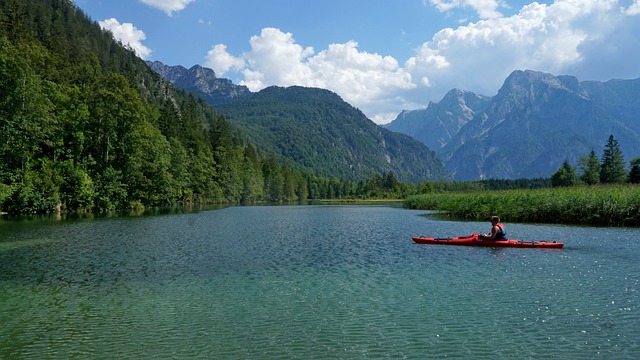
Anglers who venture out on fishing kayaks understand that the efficiency and effectiveness of their paddling strokes can significantly impact their experience on the water. To enhance performance, it’s crucial to refine your technique. Mastering a strong forward stroke enables kayakers to navigate efficiently, covering more ground with less effort. The power stroke, initiated from the torso rather than the arms, is essential for propulsion and should be executed by rotating the core while keeping the paddle shaft parallel to the water’s surface. This motion ensures a longer and more powerful push off each stroke. Moreover, incorporating a high-elbow recovery phase allows for a smoother and quicker transition between strokes, thus maintaining momentum without compromising on speed or precision.
In addition to refining individual strokes, fishing kayakers should also focus on their overall paddling posture. A properly adjusted kayak seats you at the waterline, reducing resistance and allowing for a more dynamic and responsive stroke. By keeping your back straight and your knees slightly bent, you can maintain better balance and control while reducing the strain on your back muscles. Furthermore, practicing cadence and synchronizing your strokes on each side helps in maintaining a consistent pace, which is particularly beneficial when fishing as it allows for longer periods of quiet water presence—a key advantage for anglers seeking to attract wary fish without alarming them with sudden movements or loud noises. Integrating these techniques into your paddling routine can transform your fishing kayak experience, making each outing more productive and enjoyable.
Navigating the Water with Precision: Finding the Right Propulsion System for Your Kayak

When venturing into the realm of fishing kayaks, selecting the right propulsion system is paramount for a seamless experience on the water. Paddlers and anglers alike seek a balance between speed, maneuverability, and efficiency to navigate lily-laden ponds or swift river currents with ease. The choice between a pedal-driven or traditional paddle system can significantly impact the performance and enjoyment of your fishing expedition. Pedal-driven kayaks, particularly those with a robust and reliable fin-based system, offer unparalleled propulsion for longer outings. These systems free up the hands for casting lines or securely holding gear, allowing anglers to focus on the task at hand without the fatigue associated with constant paddling. The design of these pedal-driven kayaks often incorporates a low profile to minimize water resistance and enhance tracking straightness, which is crucial when a quiet approach is necessary to catch wary fish species.
On the other hand, traditional paddle systems offer a time-tested method for kayak propulsion, providing versatility and simplicity that some kayakers prefer. The lightweight and collapsible nature of paddles makes them highly portable, ideal for those who transport their fishing kayak to different bodies of water. Paddles are also adjustable to the paddler’s size and stroke preference, offering a personalized experience. While they require more skill to use effectively, experienced anglers often appreciate the finer control over speed and direction that a well-crafted paddle can provide. Whether opting for a pedal-driven or traditional paddle system, it is essential to consider the kayak’s design, your fishing style, and the environments you plan to explore. The right choice will not only enhance your performance on the water but also significantly contribute to the overall enjoyment of your angling adventures.
Gear and Accessories for Speed Demons: What Every Fast Fishing Kayak Should Have
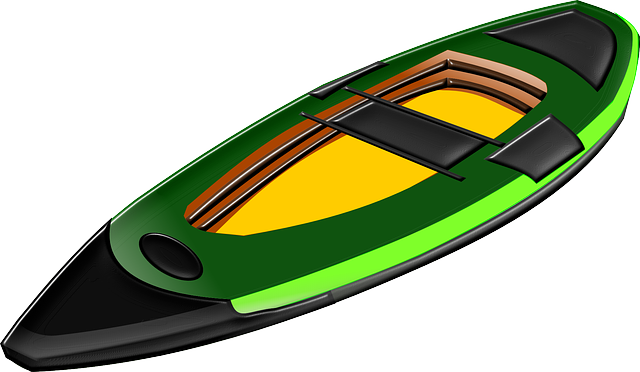
When targeting speed in fishing kayaks, gear and accessory selection plays a pivotal role in optimizing performance on the water. A lightweight, well-designed kayak is the foundation for rapid transit; models with pronounced keels or those specifically engineered for speed should be at the top of any speed demon’s list. Paddles are equally important; a high-quality, adjustable paddle that suits your height and stroke power will ensure efficient propulsion. Additionally, consider streamlined accessories that minimize water resistance. A compact, lightweight fishing kit with durable, quick-dry materials is essential for swift gear changes. Storage solutions should be aerodynamic, secure, and accessible without compromising the kayak’s sleek profile. Every ounce saved and every second shaved off can make a significant difference in high-performance scenarios.
Furthermore, strategic placement of gear within the kayak’s storage compartments is crucial for maintaining balance and reducing drag. The layout should allow for easy retrieval without disrupting the kayak’s glide. In terms of onboard electronics, a small, waterproof GPS or fish finder that conserves battery life while providing necessary data can be invaluable. Lastly, considering weather conditions and dressing appropriately can significantly impact your speed and comfort on the water. A breathable, wind-resistant outer layer can protect against elements without adding excessive weight or bulk to your setup. With these considerations in mind, a fishing kayak equipped with the right gear and accessories becomes an extension of the angler’s pursuit for speed and efficiency on the water.
